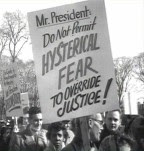

Read the full text of the Trump indictment and our top takeaways from the indictment. Here’s a breakdown of all of the charges against Trump and what they mean. The charges: Trump is accused of violating seven federal laws but faces 37 separate charges. 14, but legal experts say the case could face numerous delays. The latest: Donald Trump pleaded not guilty to federal charges that he broke the law by keeping and hiding top secret documents at his Mar-a-Lago club in Florida. More on the Trump classified documents indictment

The unmarked document concerned “military contingency planning,” according to the indictment. In Trump’s case, prosecutors say that all but one of the 31 documents he is charged with illegally retaining were marked as classified at the “secret” or “top secret” level.
#Espionage act penalties code
Such information is defined as “any document, writing, code book, signal book, sketch, photograph, photographic negative, blueprint, plan, map, model, instrument, appliance, or note relating to the national defense, or information relating to the national defense which information the possessor has reason to believe could be used to the injury of the United States or to the advantage of any foreign nation.” Technically, that information does not have to be classified, but in practice the law is almost exclusively used to prosecute retention of classified material. Shortly after 3 p.m., the Justice Department confirmed that Trump’s lawyers would not oppose the public release of the search warrant and underlying receipt of materials, which had already begun to circulate widely.Espionage Act/unauthorized retention of national defense information: Trump is charged with 31 counts of violating a part of the Espionage Act that bars willful retention of national defense information by someone not authorized to have it. Stone’s attorney Grant Smith said that the longtime Trump ally “has no knowledge as to the facts surrounding his clemency documents appearing on the inventory of items seized from former President Trump’s home at Mar-a-Lago.” Other items on the list indicate the presence of classified material, describing them as “miscellaneous top secret documents” and “miscellaneous confidential documents.” 5 by federal magistrate judge Bruce Reinhart, revealed that dozens of items were seized, most of them described in vague terms like “leatherbound box of documents,” “binder of photos” and “handwritten note.” But after several rounds of negotiations in which materials were recovered by the Archives, federal investigators came to believe Trump hadn’t returned everything in his possession. Trump has claimed since Monday that he has cooperated with investigators from the National Archives and FBI for months and that the unannounced search was an unnecessary escalation.

2020, the final month before the election, then-chief of staff Mark Meadows declared to a court that a Trump tweet deeming all Russia probe-related materials declassified was not in fact a “self-executing order” from the president. “The idea that some paper-pushing bureaucrat, with classification authority delegated BY THE PRESIDENT, needs to approve of declassification is absurd.”īut that’s stands in contrast with how Trump’s office has handled matters of declassification in the past.

“The power to classify and declassify documents rests solely with the President of the United States,” the statement read. Trump’s office, in a statement provided to John Solomon - the conservative journalist who is one of Trump’s authorized representatives to the National Archives - claimed late Friday that Trump often took classified documents to his residence and had issued a never-before-revealed “standing order” that all documents removed this way “were deemed to be declassified.”


 0 kommentar(er)
0 kommentar(er)
